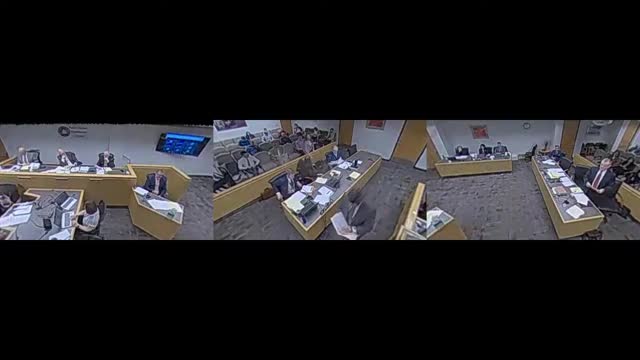Rocky Mountain Power submits exhibits in Oregon fire negligence hearings
March 23, 2025 | Utah Public Service Commission, Utah Subcommittees, Commissions and Task Forces, Utah Legislative Branch, Utah
This article was created by AI summarizing key points discussed. AI makes mistakes, so for full details and context, please refer to the video of the full meeting. Please report any errors so we can fix them. Report an error »

During the Phase III Hearing on DAO Docket Issues in Utah, a significant focus emerged on the role of utility negligence in the context of the Beachy Creek Fire. The discussions centered around the examination of various exhibits, including a critical document from the Oregon Department of Forestry, which was circulated but not yet formally admitted as evidence.
The hearing highlighted the complexities surrounding the causes of the Beachy Creek Fire, with Rocky Mountain Power (RMP) presenting data that attributed the fire to both natural and human causes. A key point of contention arose when RMP referenced a briefing note from the National Council for Air and Stream Improvement (NCASI), which indicated that while the fire was ignited by both lightning and human negligence, it did not specifically identify utilities as responsible for the human-caused ignitions.
As the hearing progressed, RMP sought to admit several exhibits, including a data request response that discussed the ignition sources of the Labor Day fires. The response noted that strong easterly winds were a primary factor in the rapid spread of the fires, a point that was emphasized by the foresters in their analysis. This led to a broader discussion about the environmental conditions contributing to the fire's intensity, rather than solely attributing blame to utility negligence.
The hearing also touched on the importance of distinguishing between various sources of information, with RMP referencing a newspaper article that suggested power lines contributed to the fires. This raised questions about the reliability of such sources compared to formal studies or reports.
Overall, the discussions underscored the ongoing debate regarding the accountability of utility companies in wildfire incidents, with implications for future regulatory decisions and public safety measures. As the hearing continues, stakeholders are keenly watching how these findings will influence the outcome of RMP's rate case and the broader conversation about utility responsibility in fire management.
The hearing highlighted the complexities surrounding the causes of the Beachy Creek Fire, with Rocky Mountain Power (RMP) presenting data that attributed the fire to both natural and human causes. A key point of contention arose when RMP referenced a briefing note from the National Council for Air and Stream Improvement (NCASI), which indicated that while the fire was ignited by both lightning and human negligence, it did not specifically identify utilities as responsible for the human-caused ignitions.
As the hearing progressed, RMP sought to admit several exhibits, including a data request response that discussed the ignition sources of the Labor Day fires. The response noted that strong easterly winds were a primary factor in the rapid spread of the fires, a point that was emphasized by the foresters in their analysis. This led to a broader discussion about the environmental conditions contributing to the fire's intensity, rather than solely attributing blame to utility negligence.
The hearing also touched on the importance of distinguishing between various sources of information, with RMP referencing a newspaper article that suggested power lines contributed to the fires. This raised questions about the reliability of such sources compared to formal studies or reports.
Overall, the discussions underscored the ongoing debate regarding the accountability of utility companies in wildfire incidents, with implications for future regulatory decisions and public safety measures. As the hearing continues, stakeholders are keenly watching how these findings will influence the outcome of RMP's rate case and the broader conversation about utility responsibility in fire management.
View full meeting
This article is based on a recent meeting—watch the full video and explore the complete transcript for deeper insights into the discussion.
View full meeting

